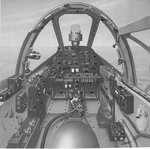There was a brief side discussion on another thread about how little training there was when going from a two-seat trainer to a single seat aircraft. It reminded me of years ago, when I went to a talk given by Thomas Lanphier. The main subject of his talk was the mission to shoot down General Yamamoto, but he also talked about what it was like to fly the P-38. He said on his first checkout flight, the instructor spent a few minutes going through all of the controls; he took off, flew around for a while, and then when he was getting ready to land, he couldn't remember where the landing gear lever was. He spent a few harried moments searching the cockpit, found it and landed without incident. Looking at the cockpit of a P-38, it makes me think that there were probably a lot of accidents and close calls due to this gap in the training that we don't know about.


